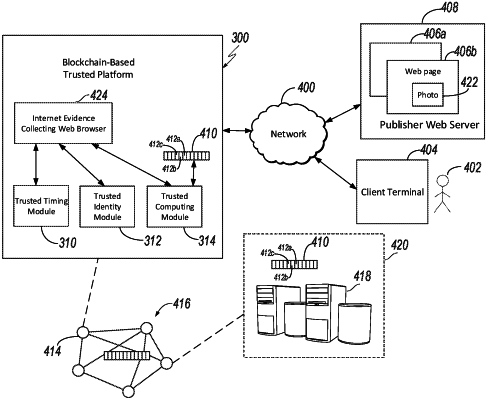| CPC G06Q 50/182 (2013.01) [G06F 16/2365 (2019.01); G06F 21/64 (2013.01); H04L 9/0637 (2013.01); H04L 9/3297 (2013.01); H04L 63/04 (2013.01)] | 20 Claims |

|
1. A computer-implemented method for blockchain-based dispute solution processing performed by a blockchain node, the computer-implemented method comprising operations for:
at a blockchain-based application, receiving a request for resolving a dispute between at least a first party and a second party that are registered on the blockchain-based application;
recording a time that the request is received on a blockchain stored on the blockchain node;
receiving one or more dispute solutions from one or more dispute solution providers that are registered on the blockchain-based application;
receiving a first selection from the first party and a second selection from the second party, wherein the first selection comprises a first subset of the one or more dispute solutions and the second selection comprises a second subset of the one or more dispute solutions;
recording a time that the first selection is received on the blockchain and a time that the second selection is received on the blockchain;
determining at least one of (i) at least one common dispute solution between the first selection and the second selection, or (ii) there is no common dispute solution between the first selection and the second selection;
generating, for each step of a plurality of steps previously performed by the blockchain node, a unique ID based on a time that the step is performed;
obtaining information-embedded digital content by embedding the unique ID in digital content; and
storing the information-embedded digital content to the blockchain.
|